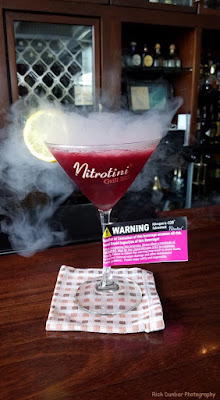 |
| The pillars at the entrance to the townhouse |
The two main characters are a Charleston lady with unfulfilled expectations and a Southern gentleman who would become a victim of an honor system void of mercy, both imprisoned by social norms of the cruelest nature. Ruth Lowndes Simmons was her name, and this is their journey into the dark side of self-serving love.
Ruth was the daughter of Rawlins Lowndes, an American lawyer, politician, and president/governor of South Carolina in the 1700s. She was in love with a childhood friend and John's Island planter named Francis Simmons. Over time, Ruth made the unwitting mistake of introducing Francis to her closest friend, Sabina Smith. Francis fell in love with Sabina immediately.
In a desperate move to counteract this unintended turn in fortune, Ruth conceived a plan incorporating deception. She told Francis Sabina was planning on announcing her engagement to another gentleman by the name of Dick Johnston. Heartbroken, Francis stepped aside.
Francis showed a handkerchief with his initials on it during a visit to Ruth sometime later and said, "Wouldn't you like to have such beautiful initials?" Ruth took that as a proposal. Next, Rawlins Lowndes called Francis to his home to discuss the proposal. Assuming Sabina would never be his wife, Francis accepted and made arrangements for his marriage to Ruth.
The wedding was now one day away, and Francis was walking down Church Street, which took him passed the Smith house and a happenchance rendezvous with Sabina. Ruth's deception comes to light during their resulting conversation. Sabina told Francis she never intended on marrying Dick Johnston. She entertained the hope that one day she might be his bride. Now those hopes were dashed, for tomorrow was his wedding day.
Outraged by what he now knew was a lie, Francis confronted Ruth Lowndes. The argument was the talk of Charleston. He expressed his contempt for her while she sobbed and pretended not to know what he meant. Raised an honorable southern gentleman, he resentfully honored his word and stuck to the agreement, thus losing Sabina forever. Bitter about the trickery, he told Ruth she would be his wife in name only.
November 15, 1796, was the date of their wedding. The place was the home of Ruth's father. Francis arrived late to the ceremony. As they exchanged vows, he didn't even look at her nor did he kiss her. He maintained that cold behavior throughout the reception. After the reception, they went to their new townhouse at 131 Tradd Street, purchased by Rawlins Lowndes as a wedding gift. Francis escorted Ruth to the door, told her with icy politeness that he hoped she would find the accommodations to her liking, and then departed to his plantation on John's Island, where he stayed for the next five years, seldom coming into Charleston.
Then, he purchased the property at 14 Legare Street and built the house that would later become known as the "Pineapple Gates House." His continued vengeance was unspeakable. He would show up for his estranged wife's dinner parties, sit at the long dining table opposite her but never spent a single night in her company. He lived in his house on Legare Street until his death twenty years after marrying Ruth, leaving their union unconsummated.
Charleston's long history provides the ideal plots for stories like this one, and its streets and alleys offer the perfect backdrop. You can choose from a variety of tours offered by the numerous hosts located throughout the historic Charleston Peninsula. Before or after your selected tour, be sure to make a stop at the Market Pavilion Hotel on E Bay Street and order the ghostly drink called the Nitrotini.



No comments:
Post a Comment